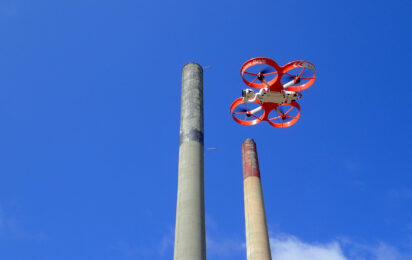It seems that no job is too daunting for Duratec – even one that’s suspended 137 metres above the ground, in the middle of the Tasmanian rainforest.
Story of a suspended pipeline
Tucked away in remote north-western Tasmania is a 280m length of pipeline hanging from a 366m-long suspension bridge, 137 metres in the air. Spanning the width of the almost inaccessible Savage River, this is just a section of an 85km-long pipeline, constructed in 1967.
Owned and operated by Grange Resources, the pipeline connects two of the company’s operations – the Savage River magnetite iron ore mine and its pelletising plant (and port facility) 85kms to the north at Port Latta on Bass Strait. (The distance is 72kms as the crow flies or 152kms by road). Magnetite concentrate is pumped, via the pipeline, from the mine to the pelletising plant, where it is processed and exported to both domestic and international markets.
The situation at hand
After years of exposure to the elements, the suspended pipeline was in need of recoating. Grange Resources had sought out quotations for services in the past but due to the pipeline’s remoteness, access challenges and other issues posed by standard paint removal methods, such as abrasive blasting, most contractors had been reluctant to take on the job. From the information Grange Resources had gleaned, the works were going to be complicated, potentially hazardous and more costly than expected.
Creative thinking
In October last year, however, Duratec’s Tasmanian team was given the opportunity to take a look. Upon investigation, innovative ideas began to formulate. Duratec is nothing if not adventurous and the team was ready for a challenge.
They went away to devise a plan. They looked at the project from all angles and brainstormed alternative methods that would address efficiency, safety and value-for-money.
This creative thinking led to solutions that not only drastically reduced the price Grange had been expecting but also provided considerable procedural benefits.
A bespoke scope
Duratec came up with a scope of works that was broken down into the following three stages:
- Removal of bulk lead-based paint
- Removal of lead-based primer
- Surface preparation and coating application
1. Paint removal
The crew had found that bulk paint removal would be best carried out via magnetic induction, a technology whereby heat is generated directly into the steel substrate, causing the coating bond to break and removing the need for abrasive blasting. Magnetic induction would reduce the number of lead-based paint controls, such as negative-pressure encapsulation, and lessen the risks associated
with lead-based paint exposure.
2. Primer removal
To remove the remaining lead-based primer, Duratec recommended a chemical-strip method and trialled five different products before selecting the most suitable. The process involved applying the product, wrapping that section in plastic and leaving it for 24 hours. Any residue would then be wiped clean and removed with acetone.
3. Surface preparation and coating application
Finally, it was suggested that the pipeline’s surface would be best prepared for coating via mechanical means, i.e. using hand-held, bristle-blasting tools, which can create a surface cleanliness comparable to that of abrasive blasting. Mechanical preparation would also reduce:
- The volume of weight
- Set-up and pack-up times
- Encapsulation requirements
- Hazards/risks from usung the BMU
Base and top coats of a high-build epoxy coating could then be applied to the pipeline.
Building maintenance unit (BMU)
To access the pipeline, Duratec crew members use Grange Resources’ Savage River building maintenance unit (also known as the ‘basket’ or the ‘trolley’ among the team). The crew has been trained on the safe use of the BMU and all team members are required to hold both Working at Heights and Gotcha Kit training certification.
While using the BMU, workers are to wear a fall arrest device and be 100 per cent hooked up at all times. A designated spotter is also to be in place.
The works
Grange Resources accepted the proposal and entrusted the suspended pipeline project to Duratec. Works commenced earlier this year and the team has made good progress.
The timeframe for the project is not set in stone as works are largely dependent on weather. For the three phases, Duratec has allocated 124 days, the bulk of which are dedicated to to mechanical preparation and coating stage. All going well, the project should be completed by April 2023.






